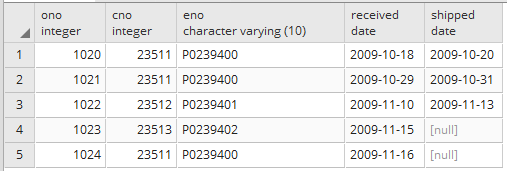

Carefully observe Postgres ignoring the TIME being inserted along with the DATE in the following example. Let us consider the following example where we are creating a table with the data type for its column set to DATE. DATE data type in PostgreSQL allows us to only store the DATE but not the time of the day. In PostgreSQL, we have the DATE data type that works similar to SQL Server. Looking to migrate to PostgreSQL ? Need support during the process of Migration ? Contact MigOps today. Insert into TestDate values ( getdate(), getdate(), getdate() ) And the third column with DATETIME2(0) limits the number of digits in fractional seconds to 0 digits. The second column with DATETIME data type stores both day and time of the day including milliseconds. select getdate() Īs we see in the following output, the first column with DATE data type only stores the date but not the time. Let us now use the getdate() function in SQL server to insert the date and datetime into the test table we created above. Create table TestDate (col1 Date, col2 Datetime, col3 Datetime2(0)) Let us see this in action through the following example. In order to store the time of the day along with the date, we have to either use DATETIME or DATETIME2. The DATE data type would only store the date but not the time of the day. In SQL Server, we have the DATE data type that works differently when compared to Oracle and similar to PostgreSQL. This concludes that the DATE data type in Oracle can store both the DATE as well as the TIME of the day. This is because it stores both DATE and TIME in Oracle. When we use TO_CHAR to also fetch the time along with the DATE, we also see the time i.e. SELECT TO_CHAR(A, 'DD/MM/YYYY HH24:MI:SS') FROM TESTDATE In the following log, we notice that the data returned contains only the DATE as the NLS_DATE_FORMAT is limited to DATE. Now, let us insert some data and see the time of the day along with the date. ORA-01830: date format picture ends before converting entire input string ORA-01861: literal does not match format string Remember that PostgreSQL may have better flexibility in inserting in different formats which will be discussed later in this article.

We shall try both with and without specifying the time.

Let us now insert a record into the Oracle Table and see if it allows us to insert only the DATE in a different format other than NLS_DATE_FORMAT. select * from nls_session_parameters where parameter = 'NLS_DATE_FORMAT' Let us see the current NLS_DATE_FORMAT in our test environment. So each insert to Oracle Table will now depend on the NLS_DATE_FORMAT. NLS_DATE_FORMAT in Oracle defines the format to use with TO_CHAR and TO_DATE functions. In order to understand this better, let us consider the following example in which we are creating a table and defining a column with data type as DATE. In Oracle, the DATE data type can store not only the DATE but also the TIME of the day. Oracle vs SQL Server vs PostgreSQL - Date data type DATE data type in Oracle In this article, we shall discuss in detail about DATE data type in Oracle vs PostgreSQL and SQL Server vs PostgreSQL. For this reason, we may see some interesting behaviors while migrating from Oracle to PostgreSQL or SQL Server to PostgreSQL. PostgreSQL is a database with a rich set of data types that follow standards. One of such is related to the behavior of the DATE data type in Oracle vs PostgreSQL and SQL Server vs PostgreSQL.

Migrations to PostgreSQL always allow us to share interesting information about PostgreSQL compared to databases like Oracle and SQL Server.


 0 kommentar(er)
0 kommentar(er)
